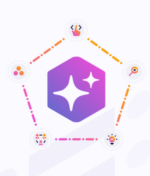
We asked these tool providers to share more information on how their solutions help companies with automated testing. Their responses are below
Darrel Farris, manager of solutions engineering at mabl
Software development teams are realizing that automated testing is key to accelerating product velocity and reaching the full potential of DevOps. When fully integrated into a company’s development pipeline, testing becomes an early alert system for short-term defects as well as long-term performance issues. The key to realizing this potential: simple test creation and rich reporting features.
Mabl is low-code, intelligent test software that allows everyone to create automated tests covering web UIs, APIs, and mobile browsers with 80% less effort. Quality teams can extend the value of end-to-end tests even further with automated accessibility checks that help ensure every user has a delightful experience, regardless of access needs. Machine learning and AI features like auto-healing and Intelligent Wait help teams create more reliable tests and reduce test maintenance. Results from every test are tracked within mabl’s comprehensive suite of reporting features, making it easy to understand product quality trends. With test creation simplified and quality data at their fingertips, everyone can focus on resolving defects quickly and improving product quality.
Mabl also includes native integrations with tools like Microsoft Teams, Slack, and Jira, so that testing information can be seamlessly integrated into workflows and everyone can benefit from mabl’s rich diagnostic data. Teams can monitor performance with speed indexes for all web pages, and manage API quality with data on the response time for each API endpoint. This allows teams to shift from reacting to failed tests and customer complaints to proactively managing product quality, improving the customer experience.
Arthur Hicken, chief evangelist at Parasoft
At Parasoft, we have various AI components and capabilities that augment the testers’ work at every layer of the testing pyramid.
Our AI improves the static analysis experience with fewer false positives, better prioritization and understanding of risk models, and it has the necessary standards such as ISO 26262, PCI-DSS, OWASP, and CWE for compliance in certain industries.
On top of that, we have advanced test creation with the generation of mocks and stubs to follow the best practices of unit testing in isolation and we have the tools that can help you determine how you can expand a test to provide additional code coverage.
Test impact analysis helps you understand what tests you need to run when there are changes in code, tests, or requirements.
We also have AI for API testing to record manual tester behavior and automatically convert that into API tests that are highly maintainable and execute quickly. We can apply AI to create test assets that not only perform functional testing, but you can automatically apply additional testing like security tests, or load and performance tests.
Further, we can use AI to capture a manual test and use it to create a test that can be run automatically because it can be automated and integrated in regression, have AI-based self-healing capabilities and perform security tests without additional tester effort or special training.
Parasoft’s solution can perform deep code analysis, which provides users with the ability to find structural problems. It also helps in functional testing, whether API testing, UI testing, or automated testing. We have a unique position in testing because our solutions cover both a white-box view at the code level as well as a black-box view at the functional and application level. Because we have both views, it enables us to make inferences that wouldn’t be possible otherwise. So, we can start to correlate literally what’s going on at the code analysis level and the unit and functional test level with what the external tests are doing and use this to provide better advice on where a problem exists in the code and how to repair it.
Parasoft’s capability of using AI to automate testing and having a full understanding from deep code analysis all the way through the external testing lets us provide a better experience to the end user.
Artem Golubev, CEO at testRigor
testRigor empowers manual testers to build functional end-to-end test automation at any degree of complexity, without the need for engineering knowledge in the mix. If a user can express manual test case steps in English, they’ll be able to build tests on the platform. testRigor will then execute the test for you from a human’s standpoint, interacting with a web, native, or mobile application.
Any person, including those that don’t necessarily have coding skills, will be able to edit, maintain, upgrade, in addition to creating those tests. Also, our tests were measured to be 200 times more stable than Selenium tests, and our customers are typically spending 95% less time managing these tests.
The QA teams can then be freed from click-through manual regression testing and maintaining automated scripts because the issue of maintenance with testRigor is eliminated for good.
Just ask Keith Powe, VP of Engineering at IDT Corporation. His team could automate only four test cases a week per person, but with testRigor, they have increased their testing coverage from less than 34% to more than 91% in under 9 months. Spending a maximum of 0.1% of the time in test maintenance, IDT has a 90% reduction in bugs and a more effective CI/CD. Many other companies such as Upgrade, DataHerald, and others have cited drastic improvements in their testing strategy with the benefits that testRigor offers.
Be sure to visit our site https://testrigor.com/ to learn more about how testRigor can help solve the biggest challenges that you’re facing with automated testing today.
To read the full Buyers Guide, click here. To see the guide to automated testing tools, click here.






